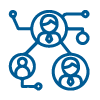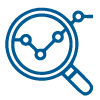ISSN-E: 2602-8069
Quality Criteria
 |
EXPERIENCE: Tsafiqui Scientific Journal in Social Sciences is a publication with more than 11 years of experience in the scientific community. It has the institutional endorsement of the UTE University and its publishing house. More than 300 researchers from around the world have participated in it with 130 published academic papers. |
 |
VISIBILITY AND ACCESS: Tsafiqui maintains an open and shared access to knowledge policy, having all its scientific works published on its website for free. The magazine, apart from the authors' commitment to dissemination, carries out constant activities to make the work visible (events, publications, interviews). Besides, the publication works on scientific dissemination on social networks (Facebook, Twitter), and academic social networks (AcademiaEdu, ResearchGate). |
 |
TIMELINESS AND SERIOUSNESS: Our magazine works hard to guarantee compliance with the times. Authors can verify the process of their manuscripts through the platform at OJS. In general, our phases comply with the following times: a) Previous manuscript estimation/dismissal phase (maximum 30 days); b) Manuscript evaluation phase for rejection or acceptance (maximum 100 days); c) Publication of the online number after the periodicity (two issues per year –June and December–). |
 |
PROCESS RIGOR: Tsafiqui guarantees a rigorous and demanding anonymous peer review process through an International Board of Reviewers external to the journal, made up of more than 80 researchers specialized in social sciences and communication. |
 |
ETHICS AND COMMITMENT: The publication has an ethical code that guarantees the rights and duties of the entire scientific community: authors, reviewers, and editors. The Tsafiqui Code of Ethics is based on the International Publications Ethics Committee (COPE). |
 |
INNOVATION, CREATIVITY, AND AVANT-GARDE: Tsafiqui is constantly innovating its processes to guarantee a higher quality to its authors, evaluators, and editors. Editorial processes are carried out through the OJS 3 Platform and multiple state-of-the-art tools are used to optimize editorial management. We believe in creative and disruptive processes to make the work published in our issues visible. |











